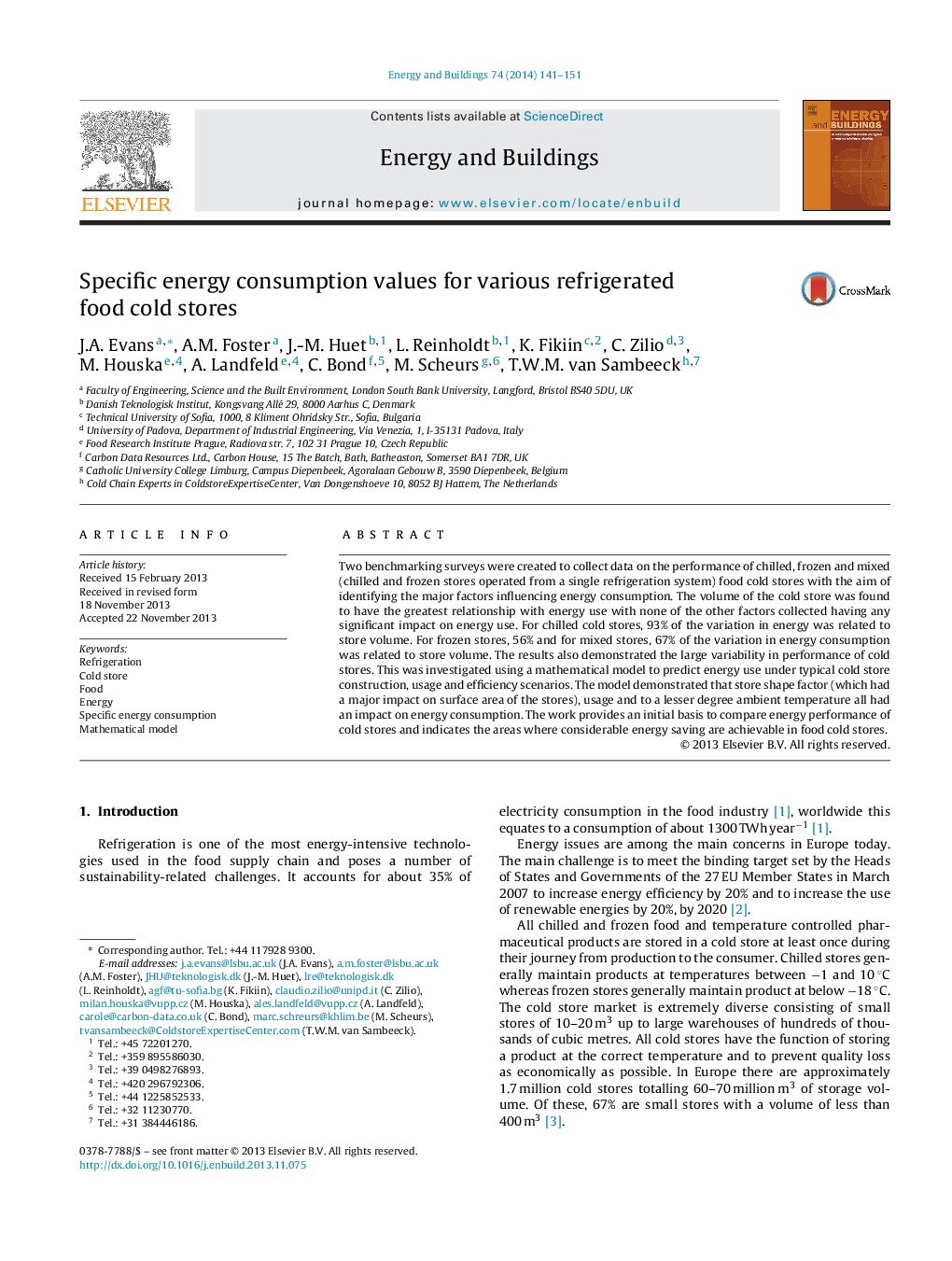| Article ID | Journal | Published Year | Pages | File Type |
|---|---|---|---|---|
| 262990 | Energy and Buildings | 2014 | 11 Pages |
•Energy consumption of cold stores was compared and benchmarked.•The work consists of the greatest number of data sets collected and published to date.•A strong relationship between volume and energy was established.•A mathematical model was developed to predict energy use.•The model was used to identify factors affecting energy consumption.
Two benchmarking surveys were created to collect data on the performance of chilled, frozen and mixed (chilled and frozen stores operated from a single refrigeration system) food cold stores with the aim of identifying the major factors influencing energy consumption. The volume of the cold store was found to have the greatest relationship with energy use with none of the other factors collected having any significant impact on energy use. For chilled cold stores, 93% of the variation in energy was related to store volume. For frozen stores, 56% and for mixed stores, 67% of the variation in energy consumption was related to store volume. The results also demonstrated the large variability in performance of cold stores. This was investigated using a mathematical model to predict energy use under typical cold store construction, usage and efficiency scenarios. The model demonstrated that store shape factor (which had a major impact on surface area of the stores), usage and to a lesser degree ambient temperature all had an impact on energy consumption. The work provides an initial basis to compare energy performance of cold stores and indicates the areas where considerable energy saving are achievable in food cold stores.
Graphical abstractFigure optionsDownload full-size imageDownload as PowerPoint slide
